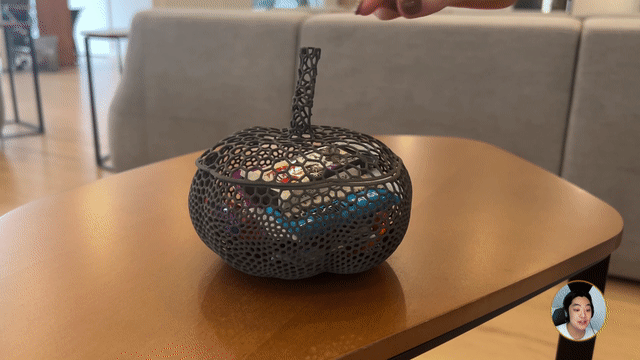We gave nTop to students: Here’s what they designed
Written by Adam Lebrecht | Product Marketing Intern at nTopolgy
Published on January 11, 2022
nTop partnered with a senior-level Virginia Tech engineering class to help students develop products for Additive Manufacturing. The students embraced the unique capabilities of the nTop software and designed some exceptional final projects.
Introduction
At nTop, we fundamentally believe that our next-generation 3D modeling software has limitless applications, and students and researchers are in the best position to explore all of them.
As a part of our nTopEd community program, nTop partnered with the Virginia Tech Additive Manufacturing class to aid them in designing their final projects.
This class, taught by Dr. Chris Williams in the Virginia Tech DREAMS Lab, has about forty senior-level undergraduate and graduate students from across the College of Engineering. Over the semester, the students study various topics, including Additive Manufacturing technologies, process physics and materials, and Design for Additive Manufacturing methodologies.
The final project requires students to design a product specifically for 3D printing. nTop allowed the students to use our software to overcome previous design challenges with traditional CAD packages. The virtual training session led by nTop's Application Engineers guided the students to use the advanced software to help them realize their unique applications.
The projects
Here we feature some of the one-of-a-kind projects of the students who took an even deeper dive into the software.
Flexible hand brace
This team used nTop & powder bed fusion 3D printing to make a flexible hand brace for a Virginia Tech athlete with a ligament injury. The Voronoi lattice is graded to provide stiffness and integrity in select regions while maintaining a lightweight and flexible design.
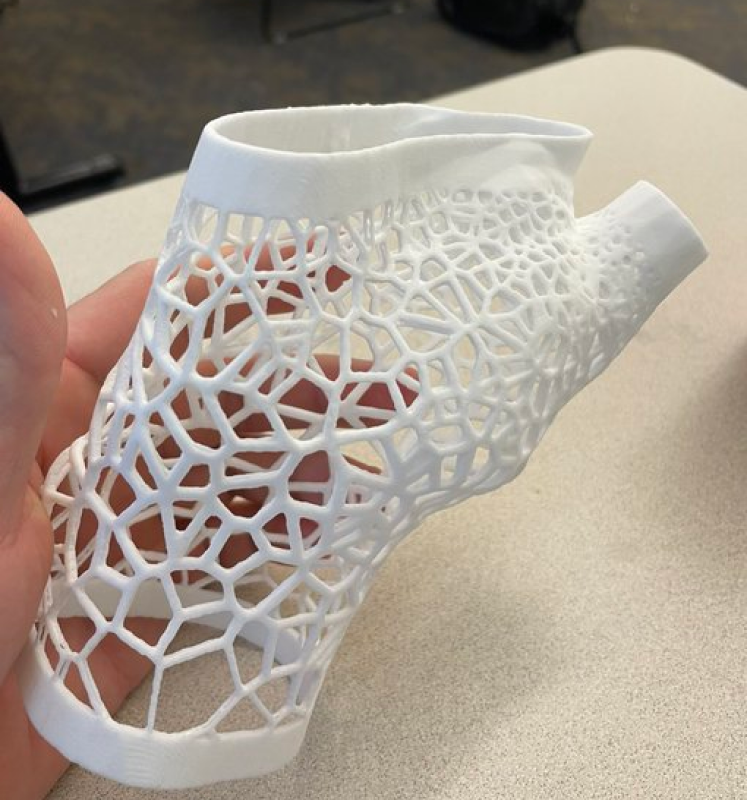
Lightweight latticed cubesat
Another team of students used nTop to design a lightweight and stiff CubeSat with lattice infilled crossbeams. They performed a modal analysis and structure FEA to ensure the design could survive launch. This model was designed for binder jetting, but it was 3D printed with powder bed fusion.
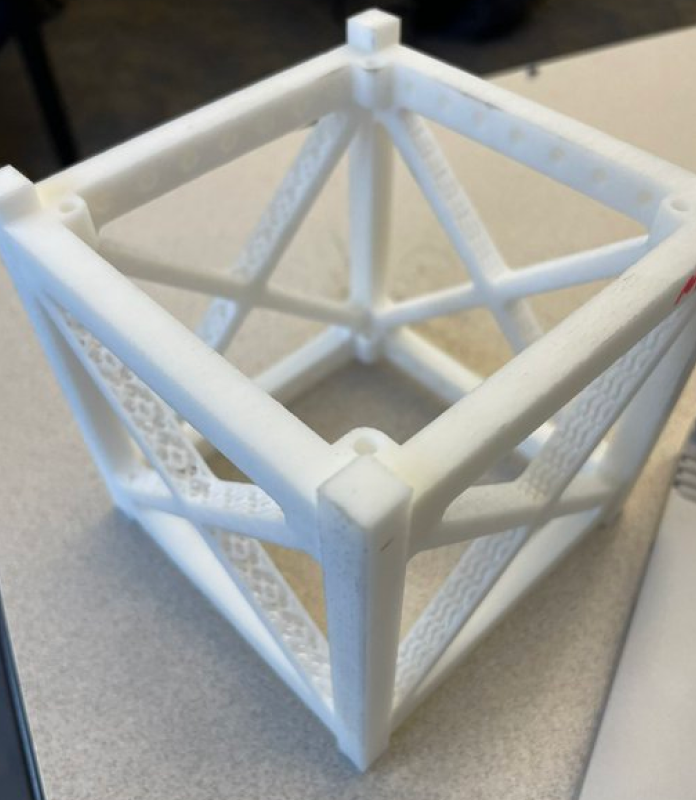
Telescoping satellite boom
This part, created by a few Virginia Tech RockSat-X team members, is a telescoping boom for their small satellite. The team used nTop to add latticing around the boom and integrate mounts for dipole antennas to minimize mass and maintain stiffness. This part was 3D printed using Stratasys ULTEM.
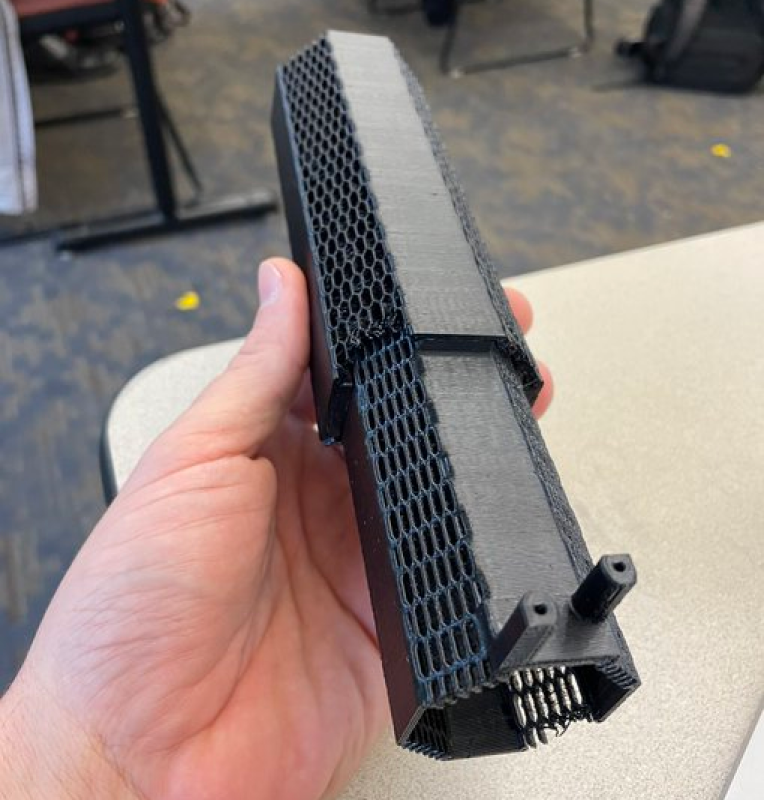
Ultra-lightweight turbine blades
Members of the Virginia Tech Aerospace and Ocean Engineering Wind Turbine team used AM to 3D print ultra-lightweight turbine blades for their competition. These thin blades have internal lattices from nTop with graded thickness to provide extra support in high-stress regions.
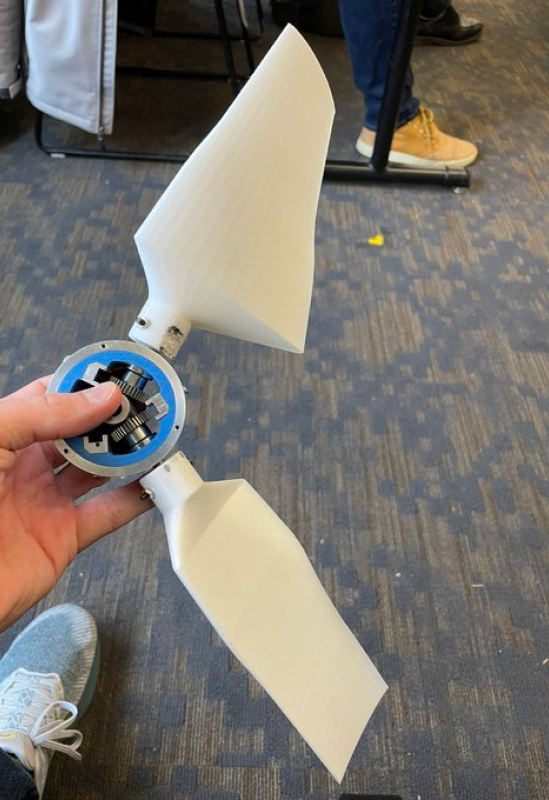
User-specific latticed midsole
This design team used nTop to create a 3D printed shoe midsole with tailored density and hardness based on individual users. They scanned a teammate’s foot and used it as a field to drive the graded lattice thickness.
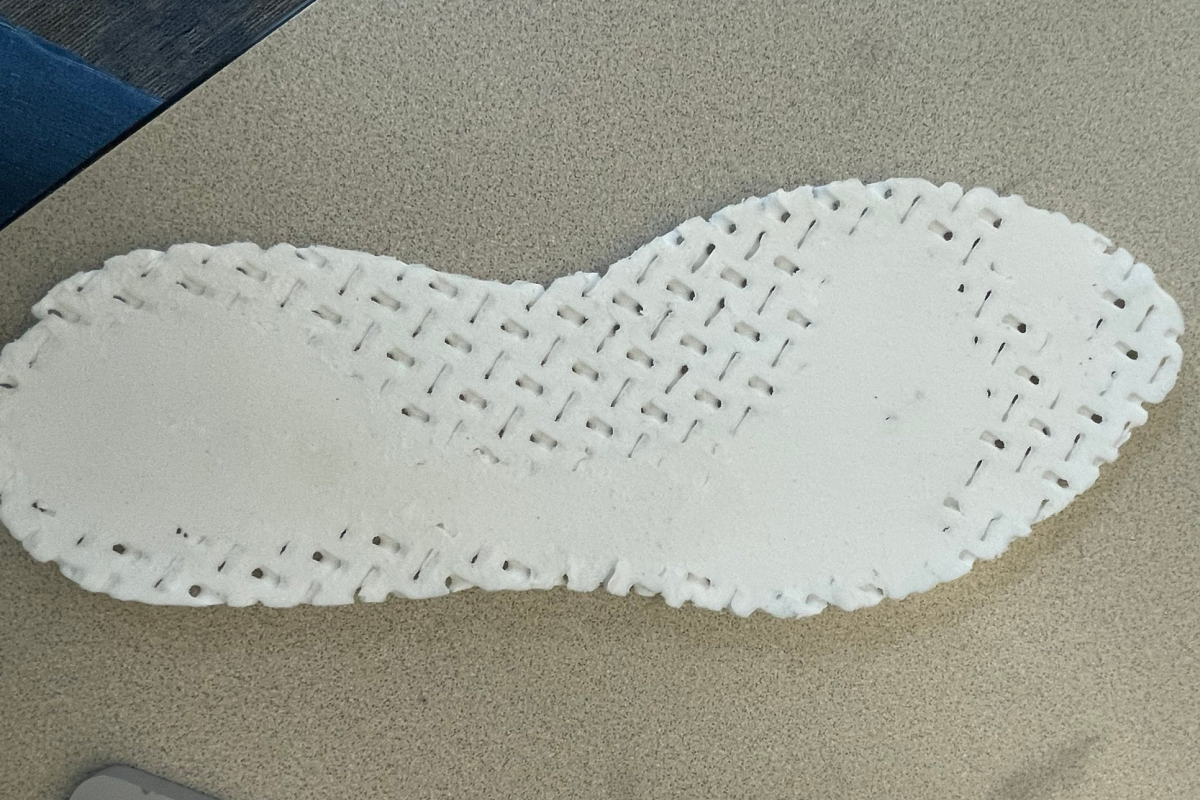
Wave shape transformer lens
Finally, In the US Navy Research MEEP course on Electromagnetics and Additive Manufacturing composites, students used nTop to 3D print a flat lens that can transform spherical waves into plane waves by grading the density and dielectric properties. A fantastic application of nTop engineering software.
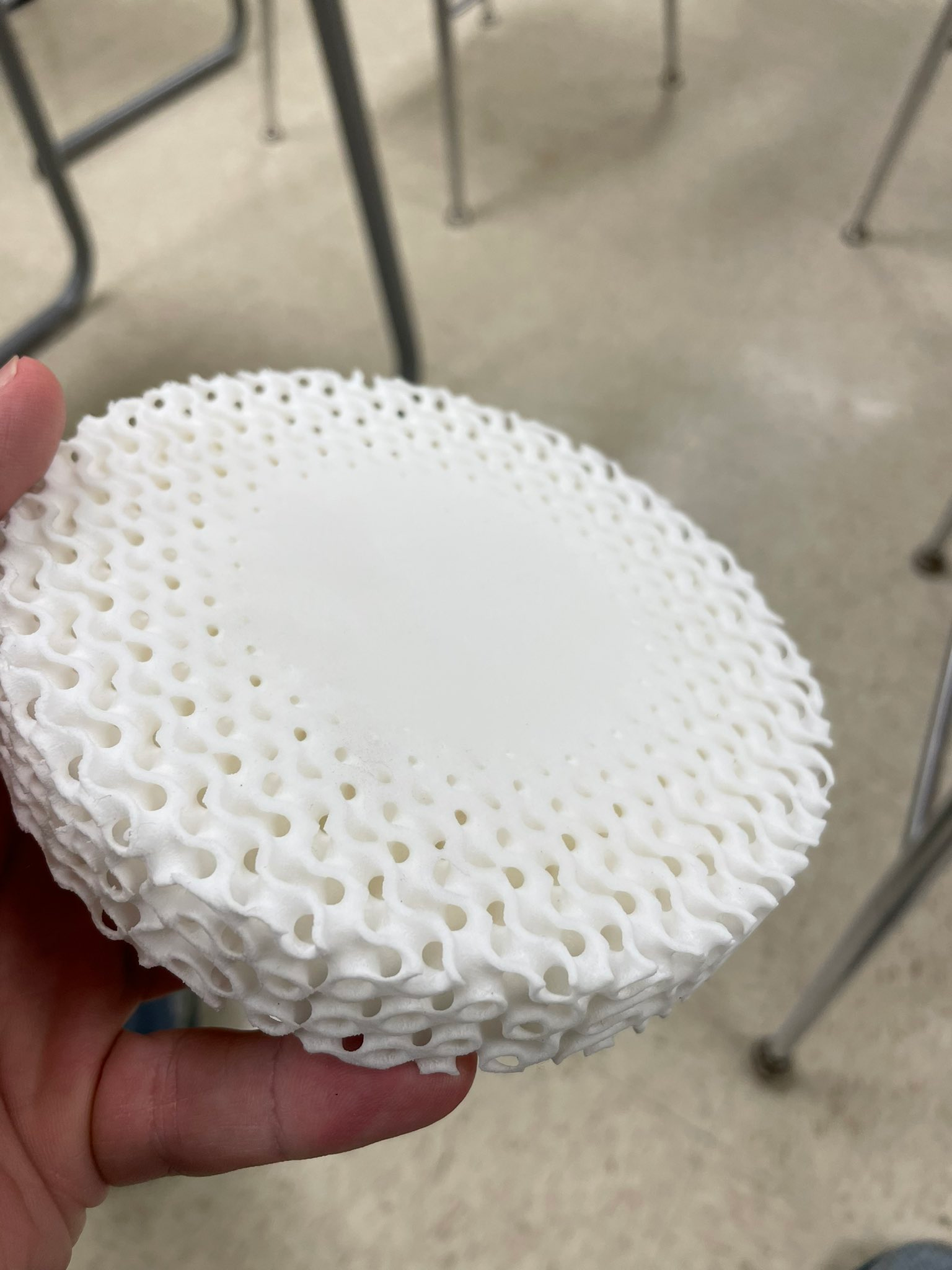
Join nTop Ed
Do you want to learn more about nTop's activities in education and join the community? Visit this page to learn more.

Adam Lebrecht
Product Marketing Intern at nTopolgy
Related content
- VIDEO
Five ways to lightweight in nTop
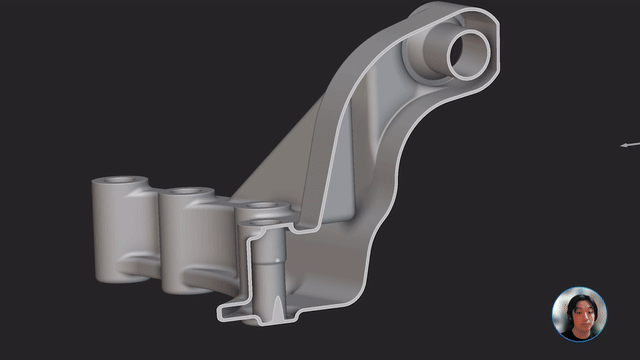
- VIDEO
Sneak peek into the nTop + Autodesk Fusion 360 integration
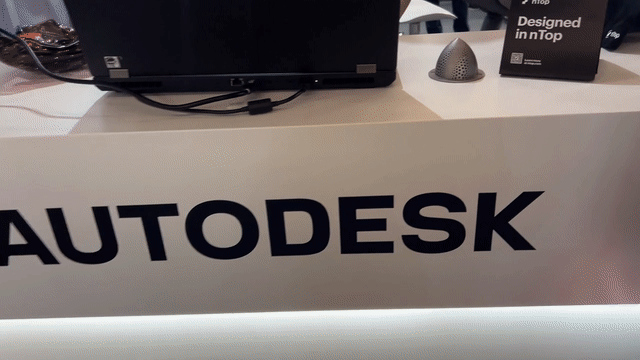
- ARTICLE
Optimizing thermal management with conformal cooling to extend operational life
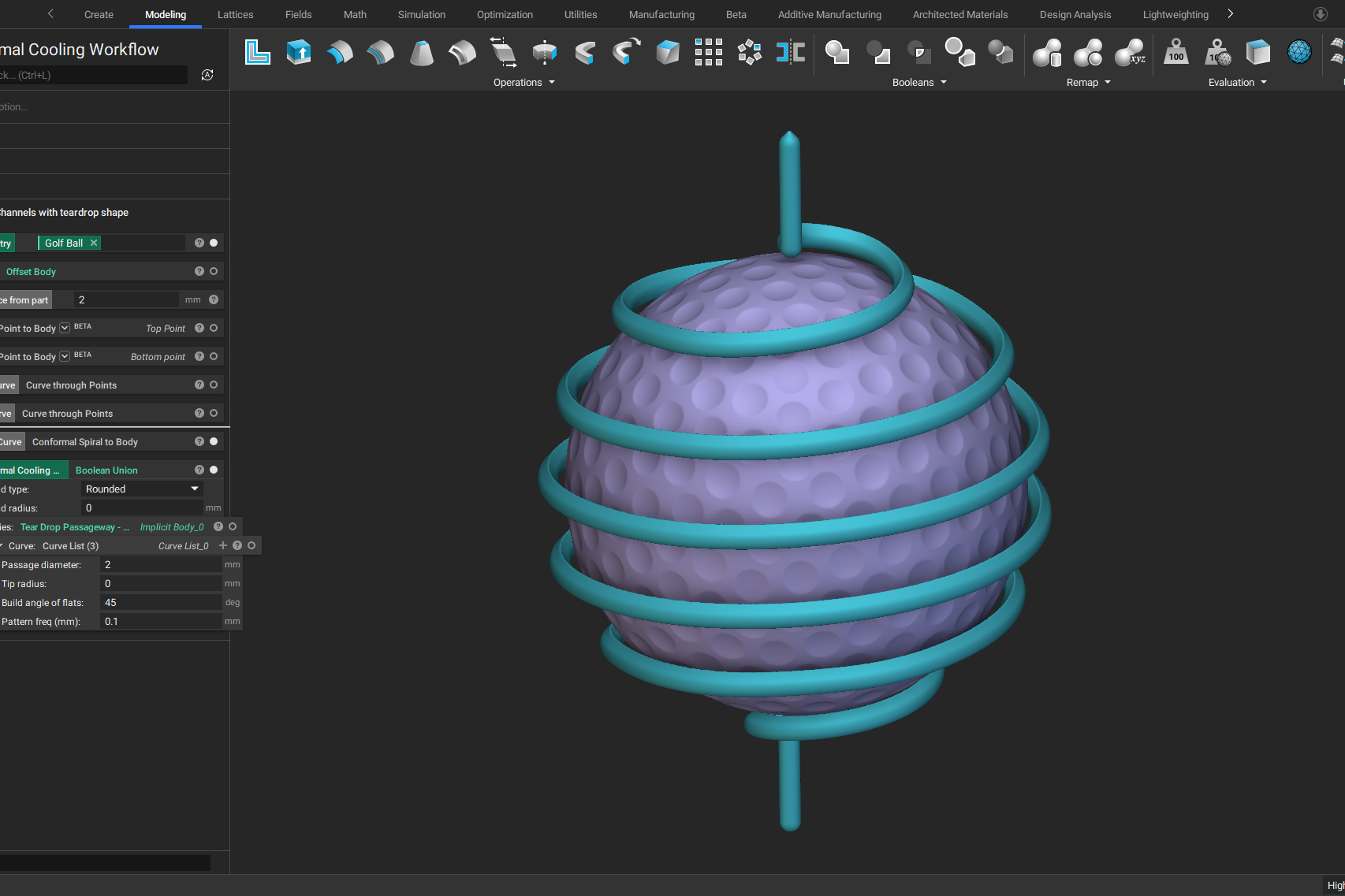
- ARTICLE
Advancing structural performance of aerospace heat exchangers
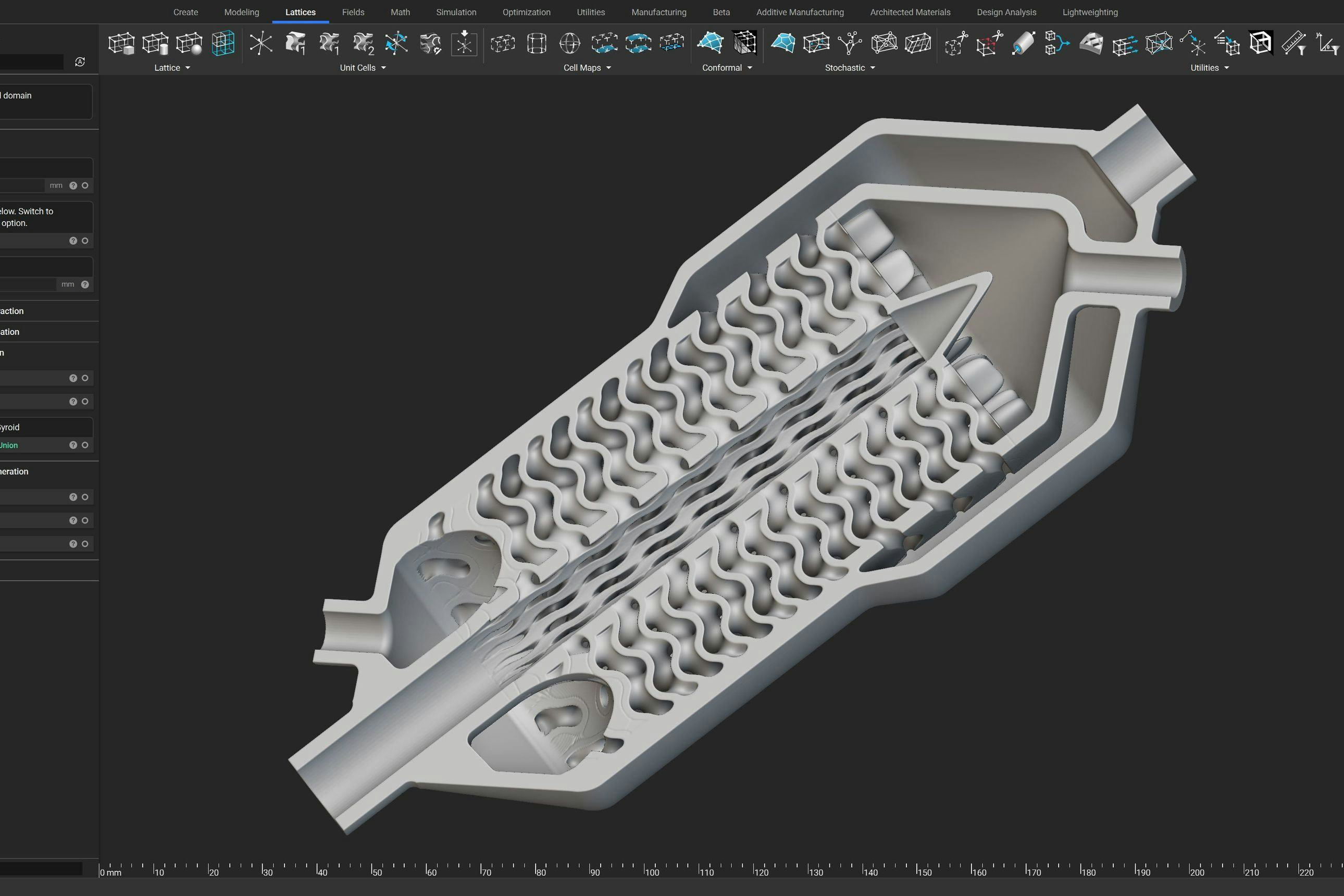
- VIDEO
Design a spooky Halloween candy bowl in nTop
